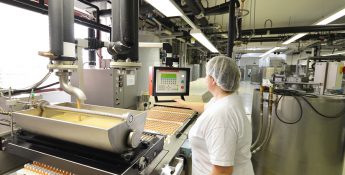As big proponents and practitioners of deep learning we keep close tabs on the market and the recent announcement from FLIR Systems describing their new family of deep learning-enabled FLIR Firefly® cameras is very exciting not only for the cool tech, but also because it’s continuing to push the envelope. Deep learning is the future.
Having spent the past 15 years guiding everything from global automotive companies to food brands I’ve found that many projects take me on fun journeys and those that stand out the most are in the food space. When I read FLIR’s press release it immediately resonated with me because of the real-world applications of what they’ve created.
Think about a food manufacturing plant that produces millions of products per day that all flow down a production line and, at some point, are analyzed by cameras to detect signs of something being off – a particular color indicates mold, the shape is incorrect, etc. – and are therefore kicked out. Integrating deep learning into image analysis for the production of food and every other product is what the future has in store.
One thing that James Cannon, the President/CEO of FLIR mentioned that I couldn’t agree with more, is: “Automated analysis of images captured by machines is a key part of our day-to-day lives that few of us think about.” This couldn’t be more correct.
Every time you look at your iPhone XS (or other models/devices with facial recognition) to unlock the device you’re literally unlocking while also taking an image of your face that’s being filed away as training data. We’re not talking about a manila envelope with bits of information in a file cabinet but thousands or millions of data points.
Cannon stated: “The quality, affordability, and speed-to-market of items like our smartphones or the food on our tables are made possible by systems using cameras doing both inspection and automated production. With the FLIR Firefly powered by Intel Movidius Myriad 2 VPU, we are enabling the designers of these systems to leverage deep learning faster and at lower costs.”
The press release added: “The Intel Movidius Neural Compute Stick enabled FLIR to rapidly prototype, streamlining the early development of machine learning in the Firefly,” said Adam Burns, Director of Computer Vision Products at Intel. “Now the FLIR Firefly uses the compact, efficient Intel Movidius Myriad 2 VPU to perform real-time inference in the camera, without compromising the amazing levels of miniaturization that FLIR has achieved in this device.”
Kudos to FLIR for creating new technologies that integrate deep learning to improve the quality of products while they’re being produced versus having to deal with the brand reputation issues caused by manufacturing defects after the fact.
Aaron Schoenberger
Founder/CEO
Soteria Intelligence

